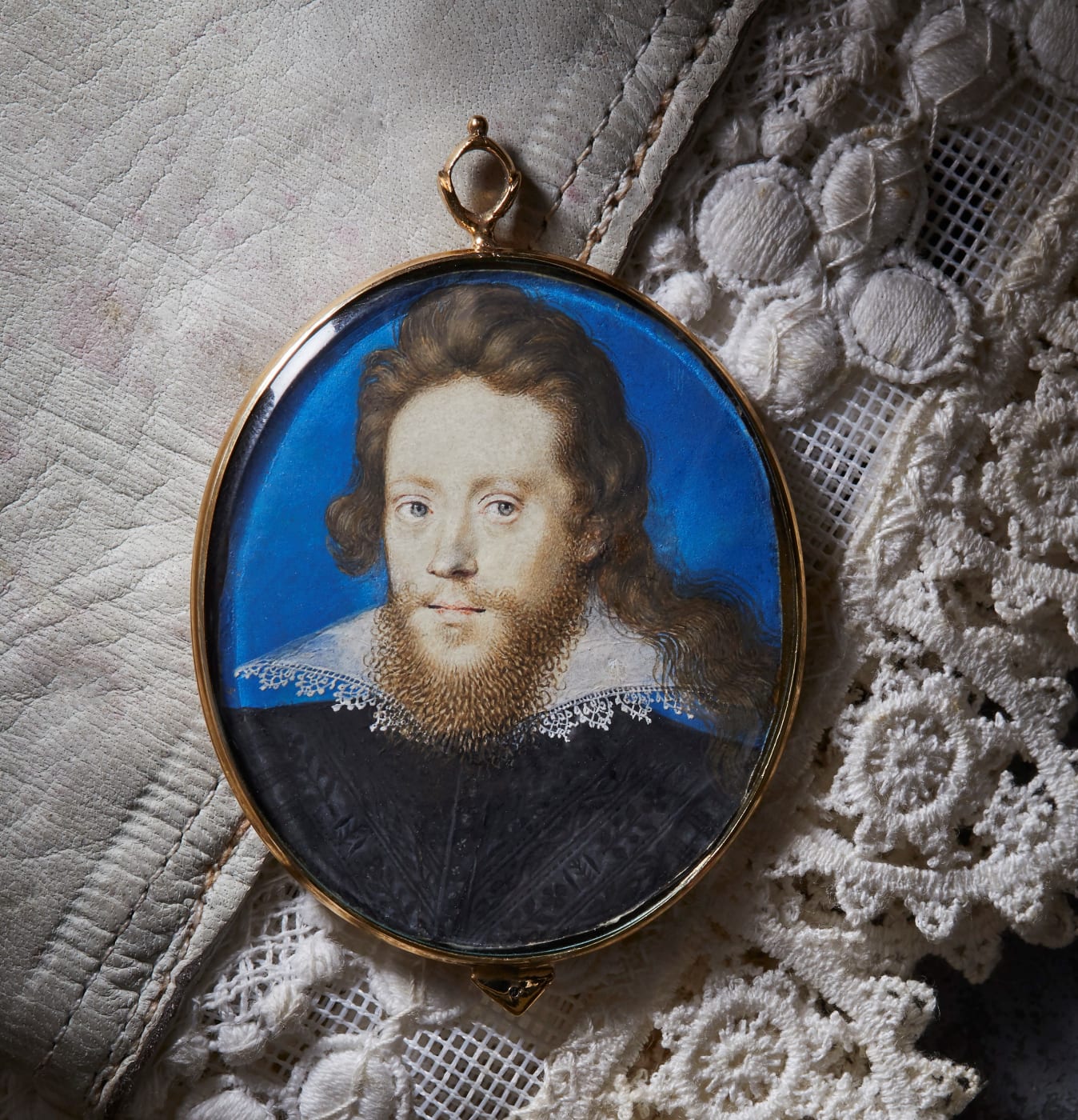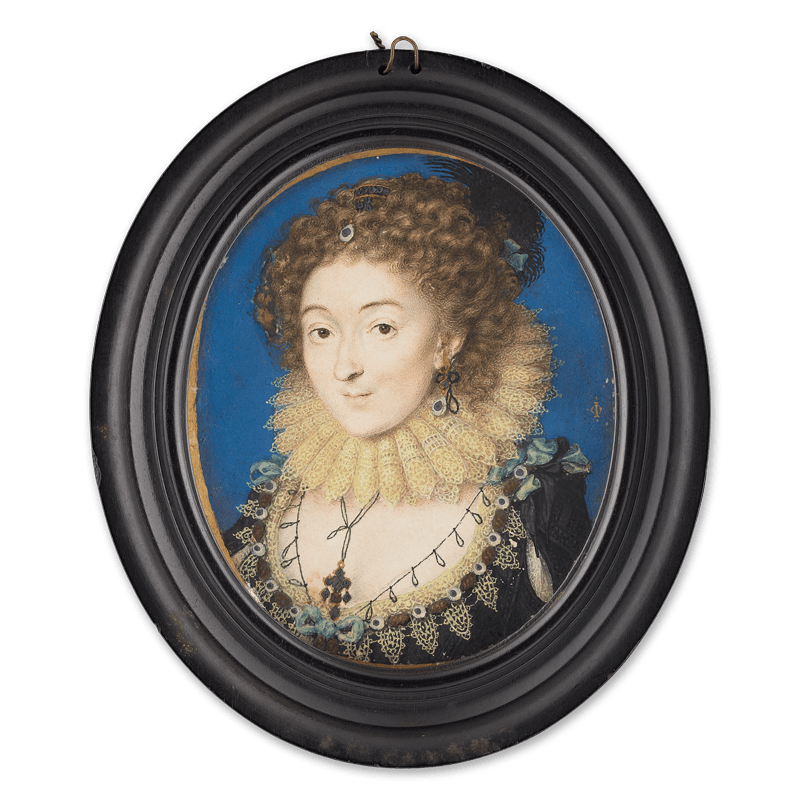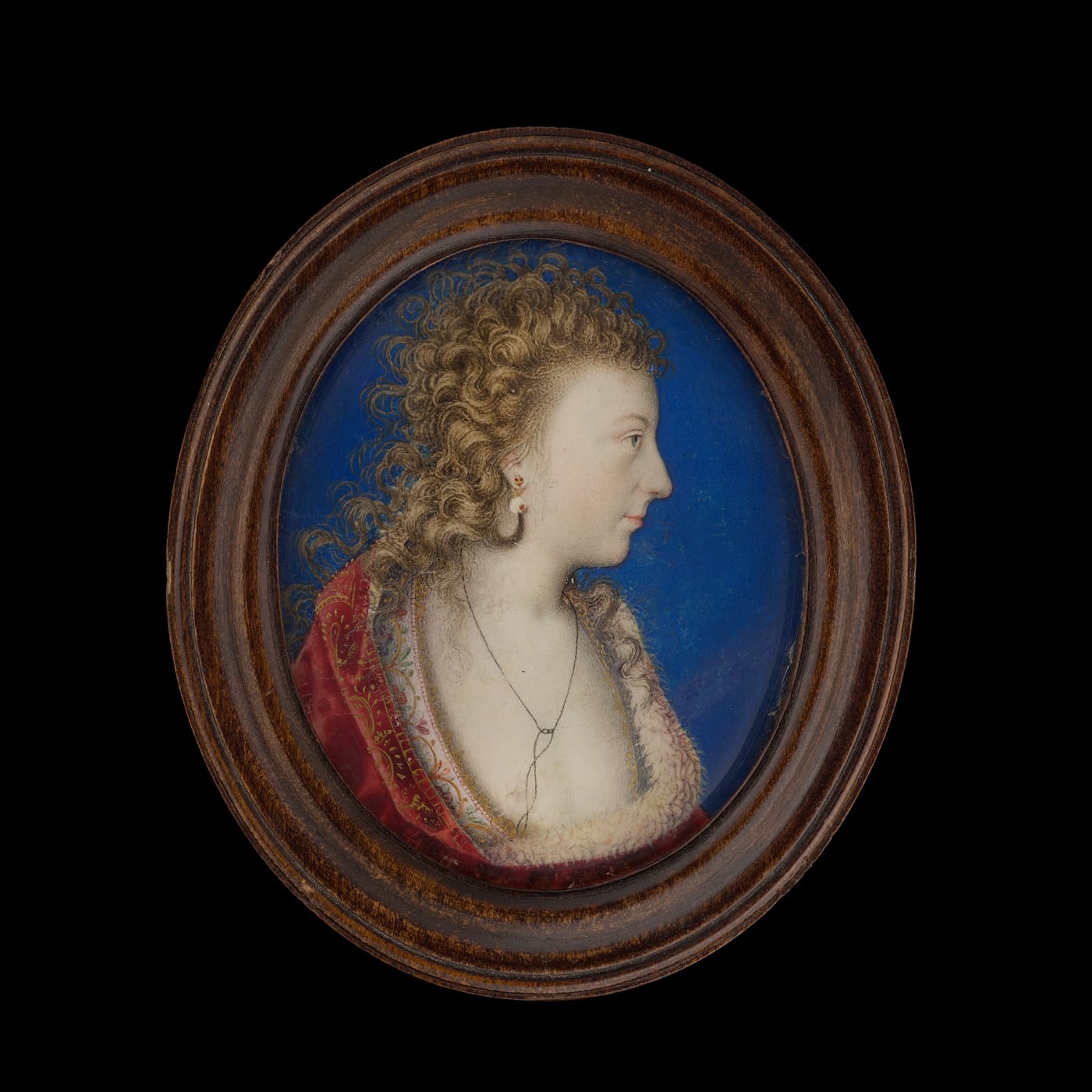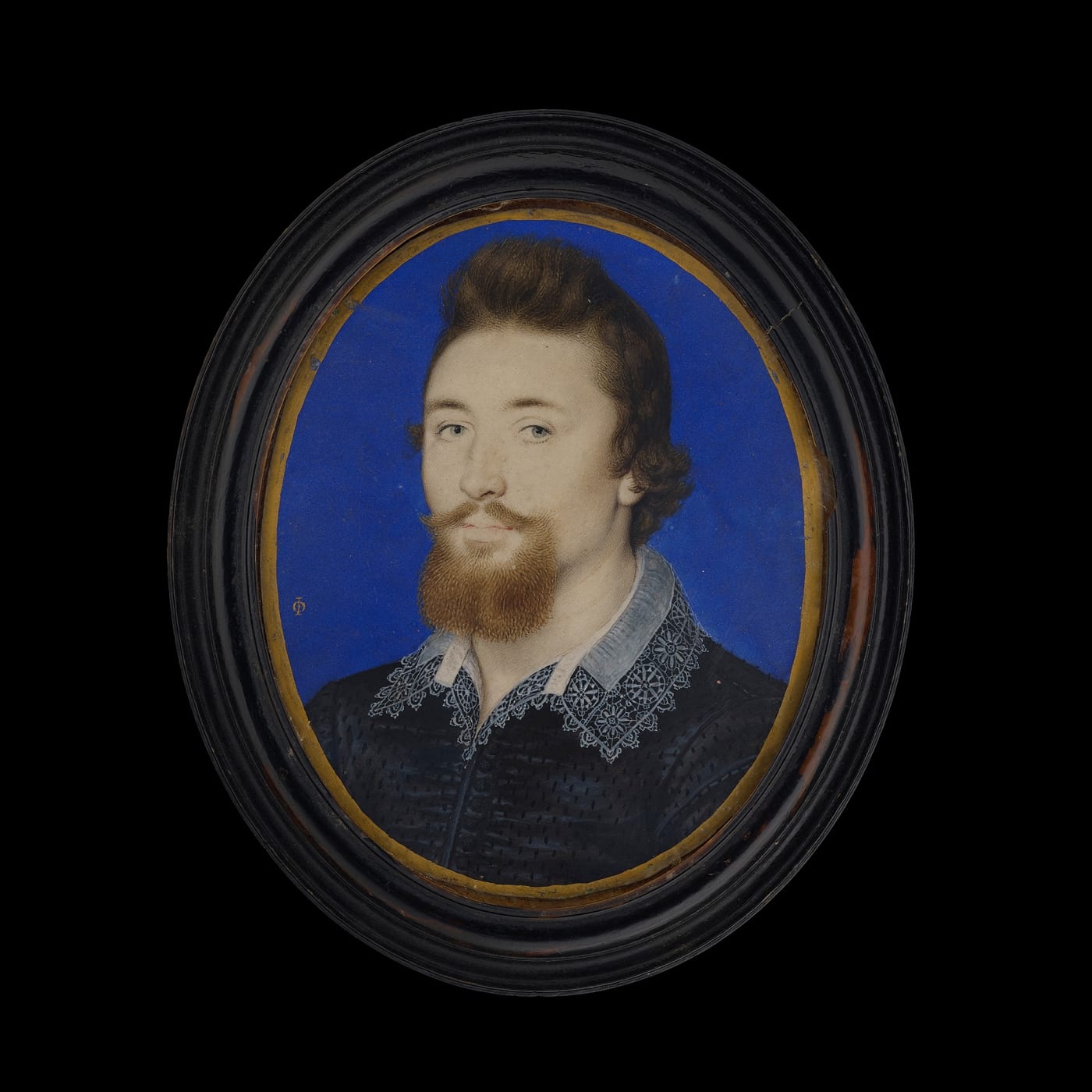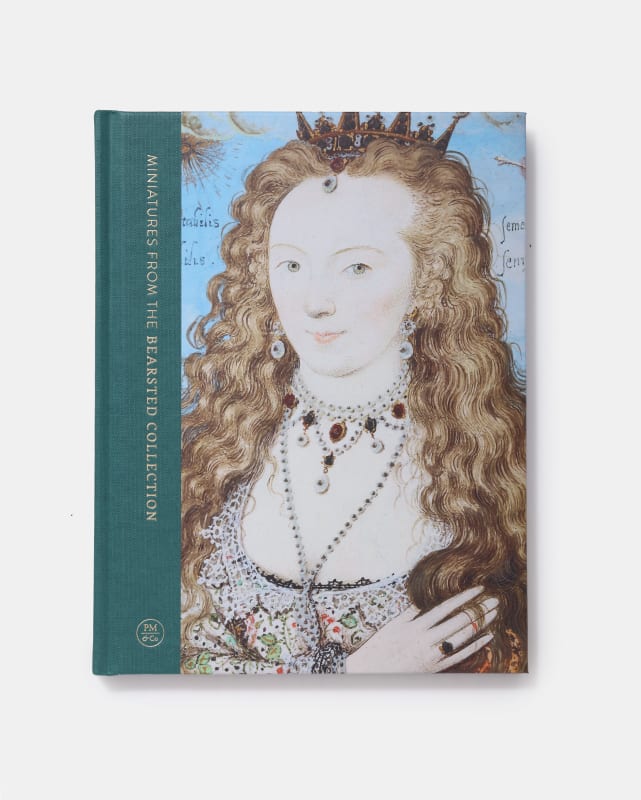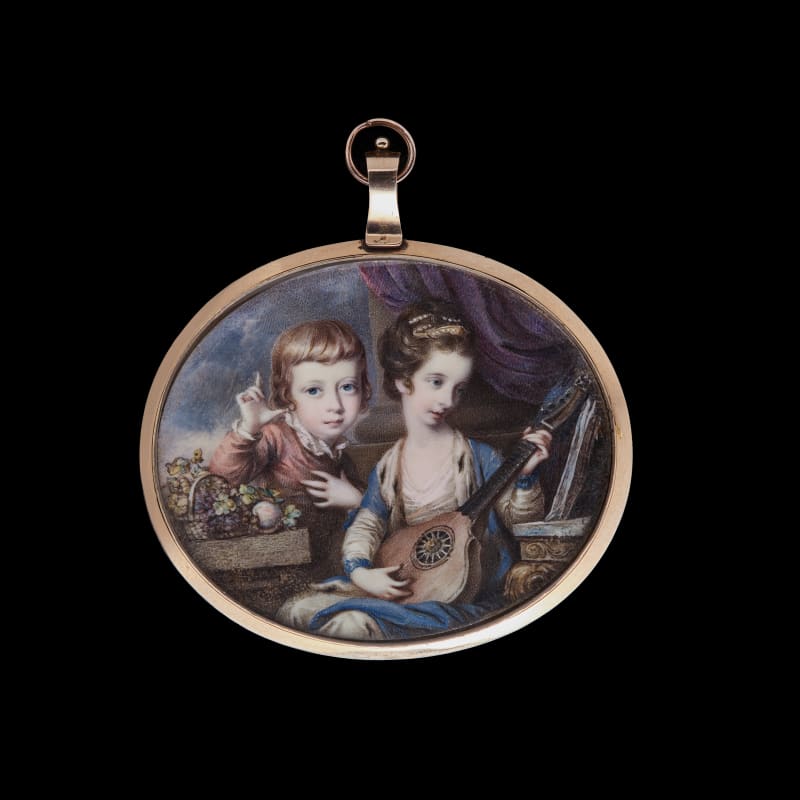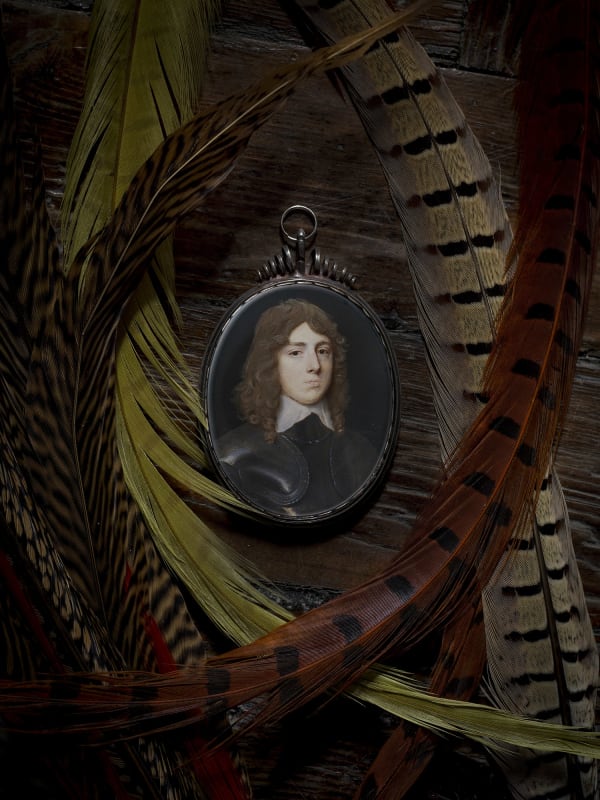Full Biography
‘inferiour to none in Christendome for the countenance in small’.
In the words of one contemporary, portrait miniaturist[1] Isaac Oliver was, along with Nicholas Hilliard (c.1547-1619), ‘inferiour to none in Christendome for the countenance in small’.[1] Writing a century and a half later, connoisseur and taste-maker Horace Walpole (1717-1797) – not usually one to dispense praise lightly – affirmed that ‘in the branch (miniature) in which Oliver excelled, we may challenge any nation to show a greater master’.[2] Simply, ‘he was a genius’, and an artist whose talents stood level with those of the greatest masters even, Walpole wagered, Hans Holbein the younger (1497/8-1543).[3] Over four hundred years after Oliver’s death this is a view that, with good reason, still endures.
Although he was a master of the English tradition of portrait miniatures, Oliver was not born in England, but in Rouen, the son of a Huguenot goldsmith, Pierre Olivier. Like many Huguenots in this period, in 1557 Pierre had fled to Geneva to escape persecution. Due to a similarly hostile climate for Protestants in England, also in Geneva at this time was Nicholas Hilliard[2] , who was staying with the family of John Bodley (c.1520-1591). Although Hilliard was only ten years-old, it seems likely that Pierre Olivier met and remembered the young Hilliard, who later became responsible for his son’s training.
However, Isaac Oliver was notborn until after his father had left Geneva to return to Rouen. Shortly following his birth, in 1568 Pierre and his son travelled to London. It is probable that he quickly made touch with Hilliard, who by now was working as an apprentice goldsmith and had also begun to practice as a limner (the sixteenth-century term for a miniaturist). The pair likely made an agreement – struck up in fluent French, which Hilliard almost certainly spoke – that he would take on the young Isaac as his assistant when he had grown old enough.
In the words of one contemporary, portrait miniaturist[1] Isaac Oliver was, along with Nicholas Hilliard (c.1547-1619), ‘inferiour to none in Christendome for the countenance in small’.[1] Writing a century and a half later, connoisseur and taste-maker Horace Walpole (1717-1797) – not usually one to dispense praise lightly – affirmed that ‘in the branch (miniature) in which Oliver excelled, we may challenge any nation to show a greater master’.[2] Simply, ‘he was a genius’, and an artist whose talents stood level with those of the greatest masters even, Walpole wagered, Hans Holbein the younger (1497/8-1543).[3] Over four hundred years after Oliver’s death this is a view that, with good reason, still endures.
Although he was a master of the English tradition of portrait miniatures, Oliver was not born in England, but in Rouen, the son of a Huguenot goldsmith, Pierre Olivier. Like many Huguenots in this period, in 1557 Pierre had fled to Geneva to escape persecution. Due to a similarly hostile climate for Protestants in England, also in Geneva at this time was Nicholas Hilliard[2] , who was staying with the family of John Bodley (c.1520-1591). Although Hilliard was only ten years-old, it seems likely that Pierre Olivier met and remembered the young Hilliard, who later became responsible for his son’s training.
However, Isaac Oliver was notborn until after his father had left Geneva to return to Rouen. Shortly following his birth, in 1568 Pierre and his son travelled to London. It is probable that he quickly made touch with Hilliard, who by now was working as an apprentice goldsmith and had also begun to practice as a limner (the sixteenth-century term for a miniaturist). The pair likely made an agreement – struck up in fluent French, which Hilliard almost certainly spoke – that he would take on the young Isaac as his assistant when he had grown old enough.
When he had reached the appropriate age, Oliver entered Hilliard’s studio as an assistant. It was a small workshop, with only one or two other pupils working there at the same time. Unlike Rowland Lockey (c.1566-1616), one of Hilliard’s other students, Oliver’s training was only in limning and he was not formally apprenticed as a goldsmith. By far the most gifted of Hilliard’s few pupils, before long Oliver, described by Richard Haydocke (1569/70-c.1642) as Hilliard’s ‘well profiting scholar’, had begun to work of his own accord.[4] His earliest known miniature is dated to 1587, suggesting that, like Hilliard, he had begun his professional career aged twenty-two. Even at this early date the differences between the two artists were readily apparent. Unlike Hilliard who – like Queen Elizabeth I (1533-1603) – thought portraits better when painted in a clear and open light with little shadow, Oliver preferred restricted light sources that cast deep shadows on the sitter’s face, for example in Isaac Oliver’s [3] self-portrait.
With its full-bodied modelling, Oliver’s style marked a distinct alternative to that of Hilliard and they soon became professional rivals. When in 1591 Hilliard was commissioned by Elizabeth to design the second great seal (the first, which had also been his work, had never been to her liking), he was forced to greatly reduce his commissions. Oliver capitalised on this, seizing the moment to develop a network of high-ranking patrons. The most prominent of these famous portrait miniatures[4] was Robert Devereux, second Earl of Essex (1565-1601), the dashing and handsome young nobleman who had succeeded Robert Dudley, Earl of Leicester (1532/3-1588), as Elizabeth’s favourite. Following his triumphant return from Cadiz in 1596, Essex commissioned a portrait from Oliver that became the source for many copies and repetitions. Other prominent miniatures created by Oliver, depict courtiers at the Court Masque [5] such as a lady dressed as Flora.
In this same year, it seems that Oliver travelled to Italy, as is attested by an inscription on the reverse of a portrait traditionally said to be of Sir Arundel Talbot [Victoria and Albert Museum, London, inv. no. P.4-1917] stating that it was made in Venice. Oliver’s trip to Italy would have provided him with much artistic stimulation. Indeed, his work had by this point already shown a highly refined appreciation of the latest developments in European art. Unlike Hilliard, whose limnings comprised only portraits and who ranked portraiture as the highest form of art, Oliver also painted histories and allegorical scenes, and could show full-length figures with a naturalism that Hilliard never quite matched, such as ‘The Rainbow Portrait’ of Elizabeth I and a ‘Young Man Seated Under a Tree.’
It was this continental sophistication that greatly appealed to James I’s (1566-1625) queen, Anne of Denmark (1574-1619), who came to England following the death of Elizabeth in 1603. A patron of the arts with highly refined – not to say expensive – tastes, Anne recognised Oliver’s astonishing talent and on 22nd June 1605 appointed him as her personal limner. Examples of Oliver’s miniatures during this era, can be found below, the artworks section includes Oliver miniatures for sale[6] . His salary – £40 a year – was the same as that which Hilliard received as limner to the sovereign. Hilliard continued to maintain the monopoly over portraits of the monarch that he had enjoyed from the time of Elizabeth, but Oliver soon found another royal patron in Henry, Prince of Wales (1594-1612). Aged only fourteen when he first employed Oliver, Henry had inherited his mother’s taste for art and his court was one of the most culturally advanced that England had ever seen. When, tragically, the Prince died aged only eighteen, it seems that Oliver was a mourner at his funeral.
Oliver married three times. He probably married his first wife, Elizabeth, shortly after he had finished his training. Like Oliver, Elizabeth was likely of French origin, and it was by her that his son Peter (1589-1647) was born. Oliver’s second marriage came as much out of pragmatism and an ambition for self-advancement as it did from love. Sara Gheeraerts (c.1575-1605), whom he married in 1602, had strong connexions to the fashionable Netherlandish artistic community in London and, the half-sister of artist Marcus Gheeraerts the younger (1561/2-1536), was closely related to the most sought-after painter in oils of the day. Following her death, Oliver married a third time – to Elizabeth Harding (also Harden) (c.1589, d. 1628-40), the daughter of a court flautist. The marriage was to last until the end of Oliver’s life; two of their children survived childhood, James and Isaac.
Oliver continued to work until the very last years of his life. Indeed, it was in 1616 – the year before his death – that he painted two of his finest works, a portrait of one of the greatest writers of his age, the metaphysical poet John Donne (1573-1631) [Royal Collection, RCIN 420026] , and a full-length “cabinet” miniature of Richard Sackville, 3rd Earl of Dorset [Victoria and Albert Museum, London, inv. no. 721-1882]. Peter Oliver, Isaac’s son by his first wife, was in many ways the inheritor of his artistic legacy. In Walpole’s view, he ‘alone approached the perfection of his father’.[5] In order to help prepare him for his career as an artist, Oliver left him in his will all of his ‘drawings already finished and unfinished’ and his ‘limning pictures, be they histories, stories or any thing of limning whatsoever of my own hand work as yet unfinished’. His finished miniatures were sold to pay for the young family that he had left behind, with Peter Oliver being given right of first refusal.
Philip Mould & Company recently acquired A Noblemen Wearing a Black Doublet with an Embroidered Silk Sash, 1610s, by Oliver which is listed available in the artworks section above. Other significant sales a artworks previously with Philip Mould & Company are listed above and include A Young Nobleman, Traditionally identified as James, 2nd Marquess of Hamilton(1589-1625), 4th Earl of Aran and Later Earl of Cambridge and A Noblewoman wearing a low cut embroidered gown with lace trim.
2 H. Peacham, The Gentlemans Exercise or, An exquisite practise, as well for drawing all manner of Beasts […] (London, 1634), p.7.
3 H. Walpole, Anecdotes of Painting in England; with some Account of the principal Artists; and incidental NOTES on other ARTS; Collected by the late Mr. George Vertue […] (London, 2nd edn, 1765), p.164.
4 Ibid, pp.164-5.
5 Quoted in M. Edmond, Hilliard and Oliver: The lives and works of two great miniaturists (London, 1983), p.36.
6 Walpole, Anecdotes of Painting, p.165.
